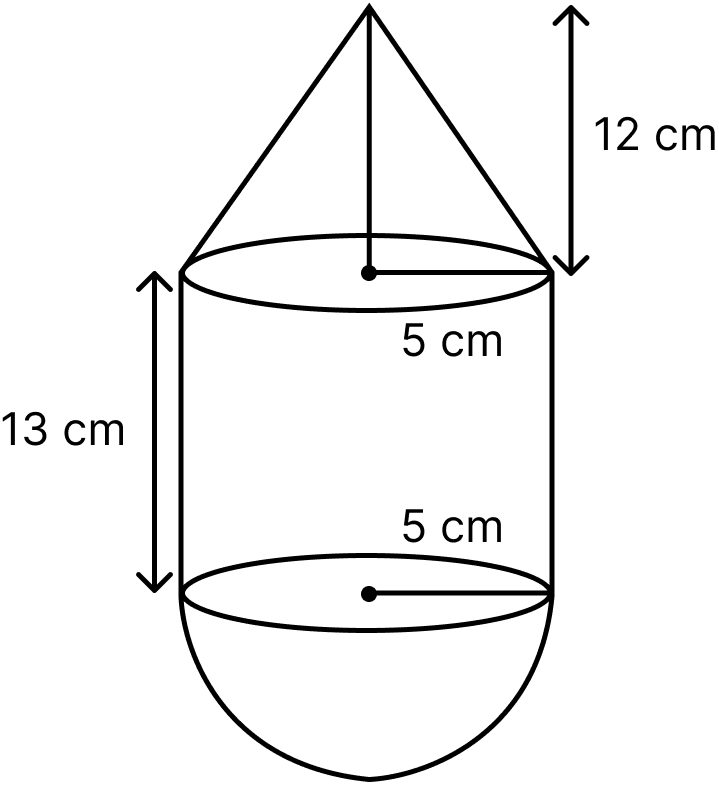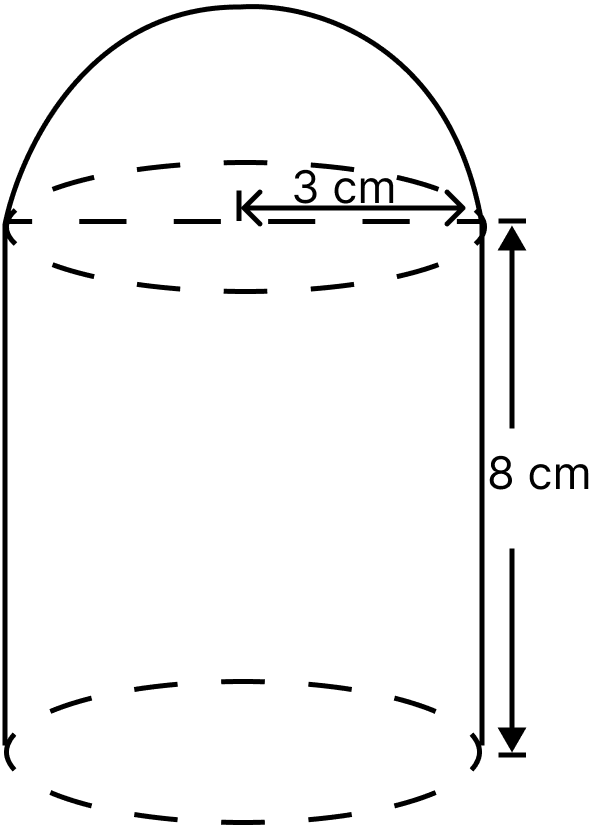Mathematics
A toy is in the shape of a right circular cylinder with a hemisphere on one end and a cone on the other. The height and radius of the cylindrical part are 13 cm and 5 cm respectively. The radii of the hemispherical and conical parts are the same as that of the cylindrical part. Calculate the surface area of the toy if the height of the conical part is 12 cm.
Mensuration
34 Likes
Answer
The toy is shown in the figure below:

Height of the cylindrical part (H) = 13 cm.
Radius = 5 cm.
Radius of cone (r) = 5 cm
Height of cone (h) = 12 cm.
Slant height of cone, l =
Putting values we get,
Surface area of toy(S) = Curved surface area of cylinder + Curved surface area of hemisphere + Curved surface area of cone.
Hence, the surface area of the toy is 770 cm2.
Answered By
16 Likes
Related Questions
The adjoining figure represents a solid consisting of a right circular cylinder with a hemisphere at one end and a cone at the other. Their common radius is 7 cm. The height of the cylinder and the cone are each of 4 cm. Find the volume of the solid.

A solid is in the form of a right circular cylinder with a hemisphere at one end and a cone at the other end. Their common diameter is 3.5 cm and the height of the cylindrical and conical portions are 10 cm and 6 cm respectively. Find the volume of the solid. (Take π = 3.14)
The adjoining figure shows a model of a solid consisting of a cylinder surmounted by a hemisphere at one end. If the model is drawn to a scale of 1 : 200, find
(i) the total surface area of the solid in π m2.
(ii) the volume of the solid in π litres.

The diameter of a metallic sphere is 6 cm. The sphere is melted and drawn into a wire of uniform cross-section. If the length of the wire is 36 m, find its radius.